- Author
- Date, John C., RANVR (Rtd)
- Subjects
- Ship histories and stories
- Tags
-
- RAN Ships
- None noted.
- Publication
- December 1992 edition of the Naval Historical Review (all rights reserved)
In the REVIEW June 1989, a photo of the above ship appeared as possibly anchored in Sydney Harbour and carrying members of the 12th Regiment Australian Light Horse, 1915. A request was made for further information on this historical photo. An interesting story of the ship, has now unfolded, as described in the adjacent photos.
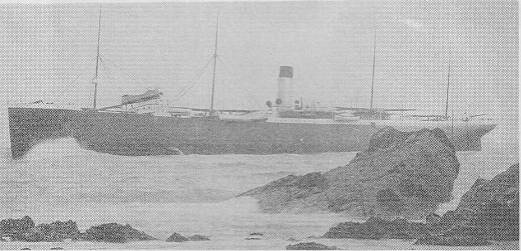 This photograph shows the liner on the rocks near the Lizard, Cornwall, where she struck on March 17, 1907. Her bow was firmly held by the rocks, and in a few days the lower parts of it were reduced to a tangle of steelwork. It was decided to cut the ship in two, abandon the bow and salvage the remaining 400 feet of the vessel. This after section was perfectly sound and later was fitted with a new bow. |
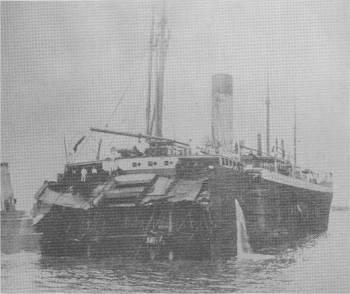 The salvaged part of the ship included the engines, boilers and the bulk of the passenger accommodation. It was a difficult undertaking to cut the vessel in two, for in 1907 the use of the oxy-acetylene flame was unknown. The only way of doing the work was to use dynamite and to explode a large number of small charges. |
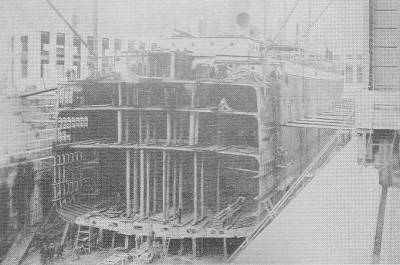 As soon as the stern of SUEVIC was salvaged a new bow was ordered from Harland and Wolff, who had built the ship. The new bow was 212 feet long and extended to the after end of No. 3 hold, thus giving a slight overlap on the salvaged portion. The photograph shows the stern of the ship in dry dock at Southampton, where it was waiting for the arrival of the new bow. |
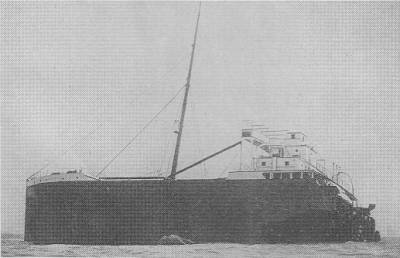 This picture shows the damaged bow shortly before it was broken up by the sea. |
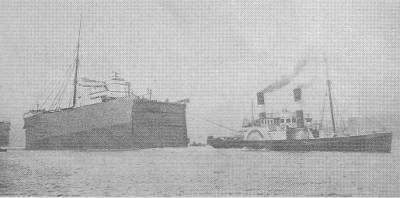 The new bow was built on a slipway in the ordinary manner, but was launched head foremost. This unusual procedure was necessary as the bulkhead that closed the after end was not built to withstand a great pressure of water. The bow was towed by the tug PATHFINDER, which is seen in the photograph, and steered by the BLAZER. The journey from Belfast to Southampton took six days. |
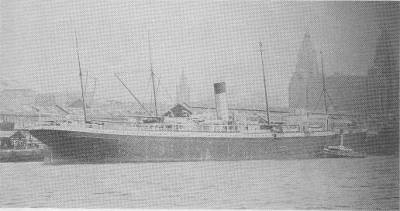 The reconditioned SUEVIC lying at the Liverpool Landing Stage in August 1925, after she had been in regular service on the run to Australia. During the war of 1914-1918 she was commissioned as a troopship. She served for nearly five years and carried 17,566 troops and nearly 1,500 horses. In 1928 she was re-named. SKYTTEVEN and converted into a whaling mother-ship for service |




